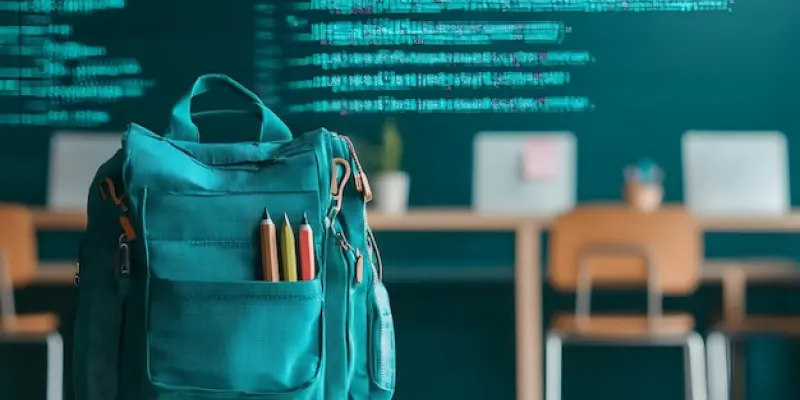The alarming rise in cybersecurity incidents targeting K-12 schools across the United States has set off numerous concerns among educators and administrators. A recent report from the Center for Internet Security (CIS) underscores these fears, revealing that an overwhelming 82% of K-12 schools encountered at least one cyber incident between July 2023 and December 2024. This data highlights significant vulnerabilities within school networks and lays bare the widespread repercussions these breaches have on educational institutions, affecting everything from daily operations to the quality of education provided.
During the 18-month period addressed in the CIS report, an astounding number of over 9,300 confirmed cyber incidents impacted nearly 5,000 K-12 institutions in the United States. The primary threats these schools faced include ransomware attacks, phishing and social engineering schemes, data breaches, denial-of-service (DoS) attacks, and malvertisement. Each of these threats presents serious risks to the operational integrity and data security of school systems, highlighting the diverse ways in which cybercriminals can disrupt educational environments. The growing sophistication of cybercriminals is evident in their evolving strategies, particularly their focus on exploiting the human element of network vulnerabilities.
Phishing and social engineering tactics have become particularly prevalent, deceiving staff members into revealing their credentials by posing as trusted individuals within the institution. This shift from targeting technical weaknesses to focusing on human error demonstrates an alarming evolution in cybercriminal strategies. As these tactics become more refined, the challenges faced by educational institutions in protecting their networks and data intensify, calling for more advanced and adaptive cybersecurity measures.
Consequences of Cyberattacks
The ramifications of cyberattacks on K-12 schools extend far beyond mere data loss, causing widespread and significant disruptions to critical services and day-to-day operations. These breaches often lead to interruptions in essential programs such as meal services, special education support, and counseling, which play vital roles in the daily lives of students. In some cases, the severity of these attacks has forced schools to close temporarily, thereby halting the educational process and creating substantial administrative hurdles. Beyond the immediate impact, these disruptions hinder long-term educational outcomes, negatively affecting students’ overall experience and progress.
One particularly concerning trend highlighted in the CIS report is the tactical timing of cybercriminals’ attacks. By launching assaults during critical academic periods, such as exam weeks, cybercriminals maximize the disruption caused, complicating the already challenging task of administering major academic events. This detrimental timing exacerbates the challenges faced by schools, leaving administrators and teachers scrambling to find solutions under pressure and further underscoring the need for robust, preemptive cybersecurity measures that can mitigate the impact of such well-timed attacks.
Factors Contributing to Vulnerability
Several persistent issues make K-12 schools prime targets for cybercriminals, with funding and expertise shortages being primary concerns. Unlike corporations that typically have extensive and well-funded information security departments, many schools lack dedicated cybersecurity teams due to limited financial resources. This funding disparity results in inadequate defense against increasingly sophisticated cyber threats. Additionally, the culture of openness that is often integral to educational environments inadvertently provides more opportunities for cybercriminals to exploit human trust. This openness, designed to foster collaboration and facilitate learning, transforms into a vulnerability that cyber attackers can readily manipulate.
These combined factors—limited resources, lack of dedicated cybersecurity personnel, and inherent institutional openness—leave schools particularly exposed to cyber threats. Without the necessary infrastructure and expertise to defend against these attacks, educational institutions face an uphill battle in safeguarding their sensitive data and ensuring the uninterrupted delivery of educational services. Given the critical importance of education to societal progress, enhancing cybersecurity within the educational sector becomes an imperative that requires urgent and comprehensive action.
Steps to Improve Cybersecurity
Addressing these challenges demands coordinated efforts at both the federal and state levels. Recognizing the acute risks posed to K-12 schools, the Biden administration made resources available to bolster cybersecurity within the educational sector. These initiatives aimed to provide schools with the tools and funding necessary to build more robust cybersecurity defenses. Additionally, state legislatures have introduced 28 K-12 cybersecurity bills across 16 states over the past year. This legislative action underscores a growing acknowledgment of the issue at the state level, demonstrating an increased commitment to addressing the vulnerabilities that leave schools exposed to cyber threats. While these steps represent significant progress, sustained effort and investment are required to achieve long-term resilience.
One prominent initiative in this domain is the Federal Communications Commission’s (FCC) $200 million cybersecurity pilot program. This program has seen overwhelming demand, with $3.7 billion in requests from schools and library applicants seeking support. Out of these numerous applications, just over 700 schools, libraries, and consortia were selected to participate. These participants must seek competitive bids for eligible cybersecurity equipment and services to receive reimbursement from the FCC, reflecting an ongoing effort to enhance the cybersecurity infrastructure of educational institutions at a grassroots level. Such initiatives are crucial in empowering schools to build effective defenses against cyber threats.
Building a Resilient Cybersecurity Culture
The disturbing increase in cybersecurity incidents specifically targeting K-12 schools across the United States has raised substantial concerns among educators and school administrators. A recent report by the Center for Internet Security (CIS) amplifies these worries, revealing that a staggering 82% of K-12 schools experienced at least one cyber incident between July 2023 and December 2024. This data exposes significant weaknesses within school networks and sheds light on the extensive consequences these breaches inflict. The impact ranges from disrupting daily operations to compromising the quality of education provided. Instances of ransomware attacks, data breaches, and other cyber threats underscore a dire need for improved cybersecurity measures to protect sensitive student information and ensure the continuity of educational services. As schools increasingly rely on digital tools for teaching and administration, addressing these vulnerabilities becomes critical to safeguard educational institutions and maintain the integrity of learning environments.

